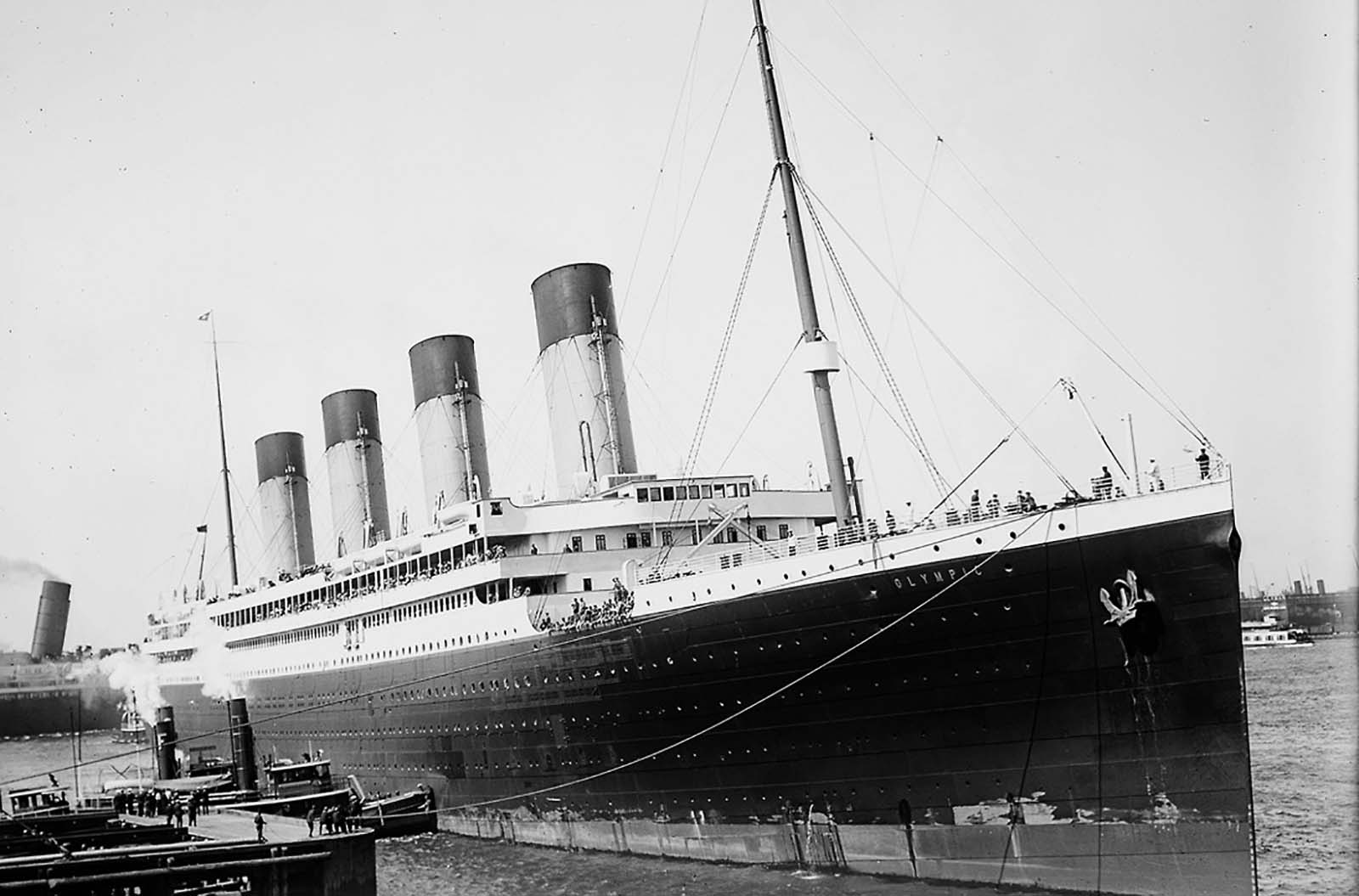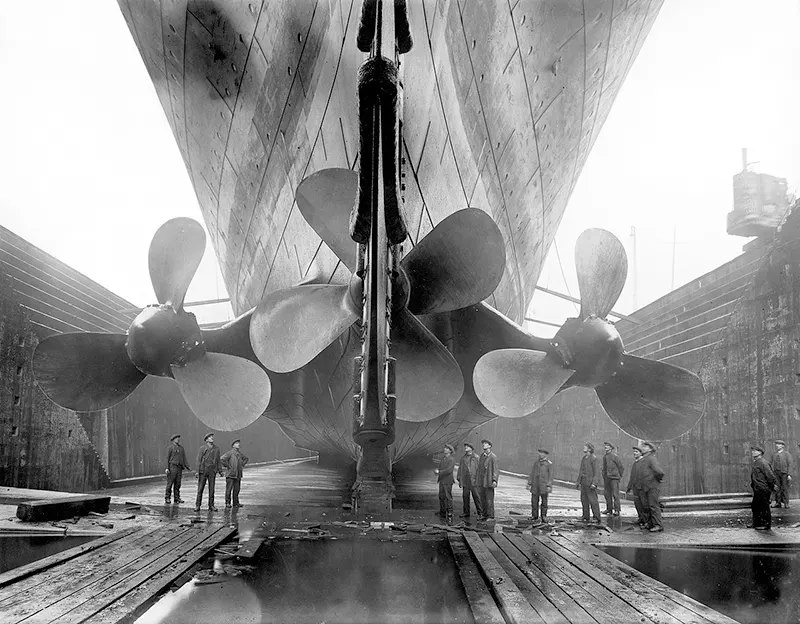The 1900 Paris Olympics Were Pure Glorious Chaos - YouTube
Hah! I love it, crazy times!
#olympic #history
https://www.youtube.com/watch?v=A2RiyuCFARI
5 Likes
1 Shares
Hah! I love it, crazy times!
#olympic #history
https://www.youtube.com/watch?v=A2RiyuCFARI
French folklore played recurring roles throughout the opening and the closing #Olympic ceremonies, but there was no working Edith Piaf or Charles Aznavour in any of it, alas. But there's one bit of final French that deserves to be pointed out in the raising of the rings.
Did y'all notice that when they were raised separately, that they looked nonetheless intertwined up there? That's a vintage French invention, folks. It's called trompe l'oeil.
Fooling the eyes.
NOW you can call it a day.
:-}}
« L’incarnation de Sequana » : quel était ce cheval mécanique au galop sur la Seine ? - La Voix du Nord <https://www.lavoixdunord.fr/1487260/article/2024-07-26/l-incarnation-de-sequana-quel-etait-ce-cheval-mecanique-au-galop-sur-la-seine
"A compelling presentation by John Hamer, author of the recently published book 'The Falsification of History', to New Horizons in St. Annes, Lancashire, England.
In October 1910, a group of seven men, all senior players in the Rothschild and Rockefeller financial dynasties, met in strict secrecy on a private island off the coast of Georgia, USA. Their brief was to create an organisation to usurp the power to create and print money, until then solely a function of the US government. This organisation was to be named 'The Federal Reserve Bank'. This plan however, had several extremely powerful, high-profile opponents who stood in the way of these banker's goals.
In the meantime, John Pierpoint (JP) Morgan, another American high-financier, involved in the Federal Reserve scheme, who also happened to own the British-based White Star shipping line, had commissioned a series of 'super-liners', the Olympic class, in an attempt to gain the lion's share of the highly lucrative Atlantic-crossing market. The speculative investment involved in this project was immense.
However, in September 1911, before the second one of the planned three 'sisters', RMS #Titanic had been completed, #Morgan's plans were dealt a massive #financial blow when RMS #Olympic, the first of the 'sister' ships off the production line was involved in a disastrous collision with a Royal Navy cruiser, HMS #Hawke.
And so, the scene was set for one of the greatest deceptions ever perpetrated... in the100th anniversary year, John presents #information and #evidence that seriously questions the official account in the #history books."
#Good Q & A at the #end
#ice does not make #holes in steel etc etc
Source: https://youtube.com/watch?v=zOca_wTZ5BQ
https://rarehistoricalphotos.com/rms-olympic-old-photos/
The Photographic History of RMS Olympic (Titanic's Sister Ship), 1911-1935

The Photographic History of RMS RMS Olympic, 1911-1935RMS Olympic was the largest ocean liner in the world for two periods during 1910–13, interrupted only by the brief tenure of the slightly larger Titanic (which had the same dimensions but higher gross register tonnage) before the German SS Imperator went into service in June 1913.
Olympic also held the title of the largest British-built liner until RMS Queen Mary was launched in 1934, interrupted only by the short careers of Titanic and Britannic.
The keel for the Olympic, Harland & Wolff Yard No. 400, was laid on December 16, 1908 under the Harland & Wolff Shipyard’s new Arrol Gantry. It was here that she and her sister, Titanic, were built side by side.
Titanic‘s progress trailed some months in the Olympic‘s wake, and would enter service some time after Olympic. The Olympic was launched on October 20, 1910, and when she started down the ways, she became the largest moving object in the world.

RMS Olympic arriving at New York on her maiden voyage, 21 June 1911.
The Olympic – the world’s newest, largest and most luxurious ocean liner – made her maiden voyage on June 14, 1911. Aboard was J. Bruce Ismay, Chairman of the White Star Line and son of the Line’s founder.
Also aboard was Harland & Wolff’s Thomas Andrews, nephew of Harland & Wolff’s Lord Pirrie. Captain Smith – who would go on to command the Titanic on her legendary and ill-fated maiden voyage the following year – was in command.
The Olympic was so remarkable that by the time she had docked in New York, the formal order for the third entrant of the Olympic-class was placed.
During the following ten months, the Olympic garnered the lion’s share of the fame on the Atlantic. Her sister Titanic was not given anywhere near the amount of attention, simply because she was the second of the class. Only after she sank did the Titanic eclipse the Olympic’s fame.

Olympic under construction, c. 1909. The Arrol Gantry can be seen towering over the ship. Titanic’s keel is visible to the left.
Olympic made four round-trip voyages to New York and back to Southampton over the summer of 1911. Then, on September 20, 1911, she departed Southampton on what was to be her fifth west-bound crossing.
As she proceeded toward the open sea, she encountered the HMS Hawke, a 360-foot long cruiser. The two vessels steamed side-by-side along a roughly parallel course, with the cruiser along the liner’s starboard side.
At first, the smaller vessel was overtaking the Olympic, but then the Olympic‘s engine speed was increased, and the cruiser began to fall back.
The suction from the larger ship’s propellers began to grow, and the Hawke was pulled bow-first into the starboard stern quarter of the Olympic. The Hawke‘s bow was crushed back, while the Olympic‘s hull was breached, and her two largest watertight compartments began to flood.
Her crossing was canceled, and she limped back up to Belfast for repairs. The process kept her out of commission until the end of November.
Once she returned to service, however, the Olympic proved that she was still a strong, reliable ship, even enduring severe punishment from the North Atlantic during a west-bound crossing to New York.

Olympic painted grey and ready for launching, c. 1910. Titanic under construction, is visible to the left.
On 9 October 1912, White Star withdrew Olympic from service and returned her to her builders at Belfast to have modifications added to incorporate lessons learned from the Titanic disaster six months prior, and improve safety.
The number of lifeboats carried by Olympic was increased from twenty to sixty-eight, and extra davits were installed along the boat deck to accommodate them. An inner watertight skin was also constructed in the boiler and engine rooms, which created a double hull.
On 4 August 1914, Britain entered the First World War. Olympic initially remained in commercial service under Captain Herbert James Haddock.
As a wartime measure, Olympic was painted in a gray color scheme, portholes were blocked, and lights on deck were turned off to make the ship less visible. The schedule was hastily altered to terminate at Liverpool rather than Southampton, and this was later altered again to Glasgow.

The launch of Olympic on 20 October 1910.
The first few wartime voyages were packed with Americans trapped in Europe, eager to return home, although the eastbound journeys carried few passengers.
By mid-October, bookings had fallen sharply as the threat from German U-boats became increasingly serious, and White Star Line decided to withdraw Olympic from commercial service.
After the War, the ship underwent a large-scale refurbishment at Harland & Wolff, which included her conversion to an oil-firing power plant. Then she was returned to commercial service.
Throughout the 1920’s, she proved herself a solid, reliable vessel. But even the great Olympic could not survive the changing times. With the advent of newer, more modern-looking liners with more private bathrooms for their first class passengers, the Olympic began to look dated.
When the Great Depression hit, this situation was made only worse as passenger bookings continued to decline. Nevertheless, the ship managed to help keep the White Star Line financially afloat.

An image of the propellers of the Olympic, 1911.
In 1934, the White Star Line merged with the Cunard Line at the instigation of the British government, to form Cunard White Star. This merger allowed funds to be granted for the completion of the future Queen Mary and Queen Elizabeth.
When completed, these two new ships would handle Cunard White Star’s express service; so their fleet of older liners became redundant and were gradually retired.
After being laid up for five months alongside her former rival Mauretania, she was sold to Sir John Jarvis – Member of Parliament – for £97,500, to be partially demolished at Jarrow to provide work for the depressed region.
On 11 October 1935, Olympic left Southampton for the last time and arrived in Jarrow two days later. The scrapping began after the ship’s fittings were auctioned off.
Between 1935 and 1937, Olympic’s superstructure was demolished, and then on 19 September 1937, her hull was towed to Thos. W. Ward’s yard at Inverkeithing for final demolition which was finished by late 1937.
At that time, the ship’s chief engineer commented, “I could understand the necessity if the ‘Old Lady’ had lost her efficiency, but the engines are as sound as they ever were”.
By the time of her retirement, Olympic had completed 257 round trips across the Atlantic, transporting 430,000 passengers on her commercial voyages, traveling 1.8 million miles.

The Grand Staircase of Olympic.

Olympic (left) being manoeuvred into dry dock in Belfast for repairs on the morning of 2 March 1912 after throwing a propeller blade. Titanic (right) is moored at the fitting-out wharf. Olympic would sail for Southampton on 7 March, concluding the last time the two ships would be photographed together.

Olympic as she appeared after her refit following the Titanic disaster, with an increased complement of lifeboats, on a Fred Pansing painting, c. 1912.
#RareHistoricalPhotos #Photography #Ships #Maritime #Olympic #Ulster #UK #Engineering

https://twitter.com/AlexGregoryGB/status/902864378604789760
My hands after spending so long in wet gloves.The blisters were never bad on this Polar row, but the wet & damp seeped into the skin...
Whoa!
#Olympic #Rowing #Photography #WHOA #Sport
My hands after spending so long in wet gloves.The blisters were never bad on this Polar row, but the wet & damp seeped into the skin... pic.twitter.com/N3Y6s3m4Uh
— Alex Gregory (@AlexGregoryGB) August 30, 2017
● NEWS ● #ProPublica #cn #china ☞ How Bots and Fake Accounts Push China’s Vision of Winter #Olympic Wonderland https://www.propublica.org/article/how-bots-and-fake-accounts-push-chinas-vision-of-winter-olympic-wonderland
● NEWS ● #TruthOut ☞ We Need a World Where the #Olympic Refugee Team Can Go Home When the Games End https://truthout.org/articles/we-need-a-world-where-the-olympic-refugee-team-can-go-home-when-the-games-end/
● NEWS ● #TheNation #covid19 ☞ A Covid Surge and Record Heat Have Created a Cursed #Olympic Games https://www.thenation.com/article/society/covid-climate-heat-olympics/
One of the Tokyo 2020 Olympics\xe2\x80\x99 main sponsors is Toyota, which is placing considerable focus on H2, making the hydrogen powered Olympic flame all the more appropriate in the games\xe2\x80\x99 cauldron.
http://www.hydrogenfuelnews.com/hydrogen-powered-olympic-flame/8547739/
#olympic, #fuel, #powered, #news, #cell, #featured, #h2, #hydrogen, #international
● NEWS ● #CommonDreams ☞ Opinion | The #Olympic Event We Need: A Race To See Where People Live the Longest https://www.commondreams.org/views/2021/07/26/olympic-event-we-need-race-see-where-people-live-longest
● NEWS ● #DemocracyNow ☞ “COVID Games” Begin in a Fearful #Japan as #Olympic Committee Prioritizes “Profits Over All Else” https://www.democracynow.org/2021/7/23/tokyo_olympic_games_covid_19_spread
Seen at the olympics! An now #animatedgif!
#how is this #awesome #thing NOT an #olympic event yet?
Why are we not funding this?